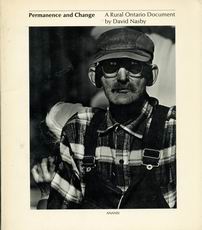
Ulli Diemer
Ulli Diemer — Radical Digressions
Articles Lists
- Selected Articles
- Articles in English
- Articles in French
- Articles in Spanish
- Articles in German
- Articles in Other Languages
- Articles A-Z
- RSS feed
- Subject Index
Selected Topics
- Alternative Media
- Anarchism
- Bullshit
- Capital Punishment
- Censorship
- Chess
- Civil Liberties
- Collective Memory
- Community Organizing
- Consensus Decision-making
- Democratization
- Double Standards
- Drinking Water
- Free Speech
- Guilt
- Health Care
- History
- Identity Politics
- Interviews & Conversations
- Israel/Palestine
- Libertarian Socialism
- Marxism
- Men’s Issues
- Moments
- Monogamy
- Neo-Liberalism
- New Democratic Party (NDP)
- Political Humour/Satire
- Public Safety
- Safe Spaces
- Self-Determination
- Socialism
- Spam
- Revolution
- Trotskyism
Blogs & Notes
- Latest Post
- Notebook 10
- Notebook 9
- Notebook 8
- Notebook 7
- Notebook 6
- Notebook 5
- Notebook 4
- Notebook 3
- Notebook 2
- Notebook 1
Compilations & Resources
- Connexions
- Other Voices newsletter
- Seeds of Fire
- Alternative Media List
- Manifestos & Visions
- Marxism page
- Socialism page
- Organizing Resources
- People’s History, Memory, Archives
- Connexions Quotations page
- Sources
- What I’ve been reading
- What I’ve been watching

Quaint rural photos lack a clear theme

Permanence and Change: A Rural Ontario Document
David Nasby
Anansi $7.50
Reviewed by Ulli Diemer
David Nasby, according to the blurb on the book’s jacket, “has recorded people at work, farm sales and auctions, stockyards and country fairs” “free from sentimentality or nostalgia, and with complete respect for his subjects.”
The publisher doth protest too much, methinks. In a book like this, containing almost all pictures, with very little text, you expect the work to speak for itself. A statement like the above, a disclaimer that the people portayed were not exploited by the camera, should be unnecessery if it is true.
It is true that this book of photographs of life in rural Ontario avoids the worst forms of condescension that middle class arty photographers are so often guilty of when they discover “the poor”, “the old”, or some other quaint group. The content of the pictures has primarily to do with the activities of life: work, socializing, play, and has less of that mood of gloom that so many “socially conscious” photographers wear like an albatross. And for this the book deserves praise. Perhaps the anger of the victims of the camera, articulated well in Marjaleena Repo’s “Photography and the Powerless”, has begun to get across, at least to some.
Others are as oblivious as ever. I recall one photographer at a recent conference I attended complaining of the lack of understanding and harassment that shutterbugs are subjected to, and citing as an example the case of one photographer who took pictures of the body of a fireman who had just been killed when a building collapsed, and who was chased and almost beaten up by the dead man's buddies. This he just couldn’t understand.
Perhaps it’s a lack of respect for the human sensibilities of others that is bred into us in childhood when adults, complete strangers as well as relatives, are forever gurgling over our cuteness, squeezing our cheeks, and treating us like imbeciles. Even those who understand how oppressive condescension is when it’s applied to other races, the poor, or women, just love to slobber over children as if they were funnylooking teddy-bears.
David Nasby, to his credit, avoids many of the faults of this approach to photography. A number of the individual shots are interesting. But the question arises: why were they put together into a book? What’s the point? For the book is obviously not a collection of individually compelling photographs. The majority of the shots, by themselves, don’t warrant publication simply for their individual quality as art. Rather, they’re included as part of a thematic treatment of a topic.
But the problem is that the themes are not brought out. The volume is simply a collection of pictures of rural life. As a result, there is no real message, no dynamic that is revealed, no discernible pattern. Nasby’s attempt at artistic integrity, his desire (I suppose) to avoid “imposing” a pattern from the outside on this way of life, becomes self-defeating. It ends up as an artistic form of the eimpirical questionaire-sociology that pervades our universities. The attempt to simply record, to portray “objectively”, portrays meaninglessness. And so, the overall effect of the volume becomes what the individual pictures seek to avoid: an invitation to sigh quietly in your living room over the quaintness of this way of life, so different from our own Arty National Geographic.
It makes you wish that artists, whether they operate with words or visual images would occasionally stop to ask themselves what they’re trying to communicate, and to whom. A price tag of $7.50 should help to make it clear, by itself, who is going to buy this slim volume.
I wonder, too, why it is that photographers are so prone to taking pictures of people different from themselves, whether it be a college teacher with a degree in sociology, like Nasby, taking pictures of rural life, or male professionals who can think of nothing but tits to photograph. The best thematic photography comes from people trying to convey their own way of life on film.
Published in The Varsity
Keywords: Photography – Rural Living